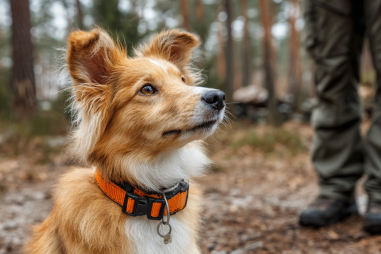Shetland Sheepdogs, affectionately known as Shelties, are renowned for their intelligence, agility, and affectionate nature. However, like all breeds, they can develop certain behavioral challenges if their needs for mental stimulation, exercise, and consistent guidance are not fully met. Understanding the common behavioral problems that Shelties face—and how to address them—can help owners foster a happier, well-adjusted companion. In this article, we’ll explore typical Sheltie behavioral issues, their causes, and effective strategies for correction, emphasizing a positive, consistent approach to training and care.
Typical Behavioral Problems in Shelties
Shetland Sheepdogs are generally friendly and eager to please, but some common behavioral problems can surface, especially in the absence of proper training and stimulation. These include:
- Excessive barking: Shelties tend to be vocal, but incessant barking can become problematic, disturbing the household and neighbors.
- Separation anxiety: Being very attached to their owners, Shelties may become anxious or destructive when left alone for too long.
- Jumping up: Their enthusiasm can sometimes lead to jumping on people, which can be unwelcome or dangerous, especially with children or elderly guests.
- Nipping or mouthing: Shelties may nip out of excitement or frustration, a behavior common in herding breeds that need to be controlled early.
- Digging or destructive behaviors: Boredom or lack of exercise can manifest in destructive chewing, digging, or other unwanted activities.
- Fearfulness or shyness: Some Shelties develop timidity or become easily frightened, which can impact their socialization and confidence.
Causes and Early Signs
The root causes of behavioral problems in Shelties usually stem from one or more unmet needs. These highly intelligent dogs require both mental and physical stimulation to stay balanced. Early signs of trouble might include persistent whining, increased restlessness, or avoidance of social interaction. Inadequate training during puppyhood or inconsistent discipline can exacerbate these issues. Additionally, genetic predispositions and health problems sometimes influence behavior, making early observation critical.
Training Strategies for Correction
Correcting Sheltie behavioral problems begins with understanding their mind and working patiently with their natural instincts. It’s essential to start training early, focusing on teaching basic commands and socialization skills. Here are some key strategies:
- Establish clear boundaries: Set rules for acceptable behavior from the start to prevent confusion.
- Socialize regularly: Introduce your Sheltie to various people, pets, and environments to build confidence.
- Discourage unwanted behavior consistently: Gently but firmly redirect barking, nipping, or jumping to more appropriate outlets.
- Use crate training: Crates can provide a safe place for your dog and help ease separation anxiety.
- Practice obedience training: Regular sessions enhance communication and reinforce good behavior.
Using Positive Reinforcement
Positive reinforcement is particularly effective with Shelties because of their sharp intelligence and eagerness to please. Rewarding desired behaviors immediately with treats, praise, or play helps the dog associate good conduct with positive outcomes. Avoid harsh punishments, as these can trigger fear and anxiety, worsening behavioral issues. Consistent rewards for calmness, obedience, and quiet behavior will encourage your Sheltie to repeat those actions.
When to Seek Professional Help
Sometimes, despite best efforts, behavioral problems persist or worsen. If your Sheltie exhibits severe aggression, excessive anxiety, or destructive behaviors that compromise the safety of themselves or others, it’s important to consult a professional. Certified dog trainers or canine behaviorists specialize in evaluating the root causes and developing tailored intervention plans. Early professional involvement often prevents escalation and helps restore harmony in your home.
Impact of Exercise and Mental Stimulation
Shetland Sheepdogs thrive when given regular physical exercise and mental challenges. A lack of stimulation often leads to boredom, which can fuel many behavioral problems such as barking, chewing, and restlessness. Aim for daily walks, play sessions, and engaging activities like agility training, puzzle toys, or obedience exercises. These not only expend excess energy but also keep the Sheltie’s sharp mind busy, reducing the chances of misbehavior.
Consistency in Owner Behavior
One of the most important factors in managing Sheltie behavior is consistent owner response. Dogs look to their humans for cues on how to behave, so mixed messages or inconsistent discipline can confuse and frustrate them. Make sure everyone in the household understands how to respond to the dog’s behavior and reinforces the same rules and training methods. Consistency increases the likelihood of success and builds a stronger bond between you and your Sheltie.
Practical Advice for Maintaining Behavioral Health
To keep your Sheltie happy, well-behaved, and mentally healthy, consider implementing the following practical tips:
- Start training and socialization early to prevent problems before they begin.
- Ensure your Sheltie gets plenty of physical activity and enrichment.
- Use positive reinforcement techniques rather than punishment.
- Maintain a structured routine to provide a sense of security.
- Monitor behavior closely to catch and address warning signs promptly.
- Seek professional advice when challenges feel overwhelming or persistent.
By meeting your Sheltie’s physical and emotional needs and responding with patience and consistency, you can effectively address common behavioral issues and enjoy a well-mannered, joyful canine companion for years to come.







